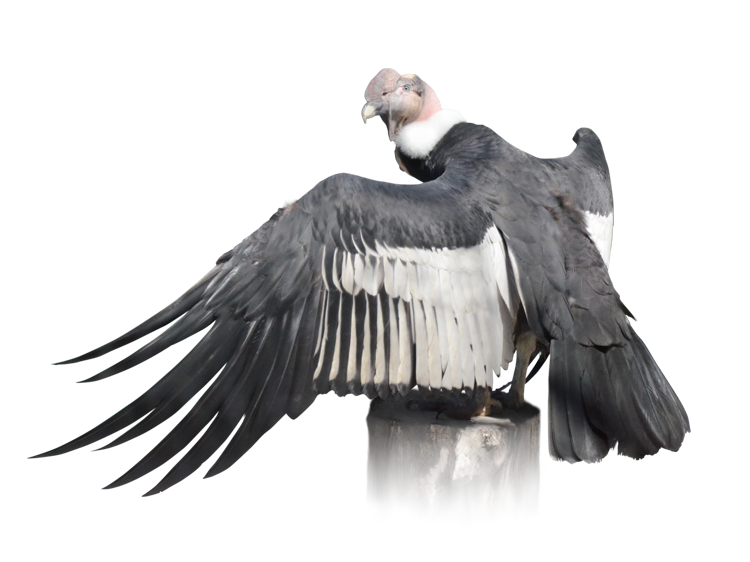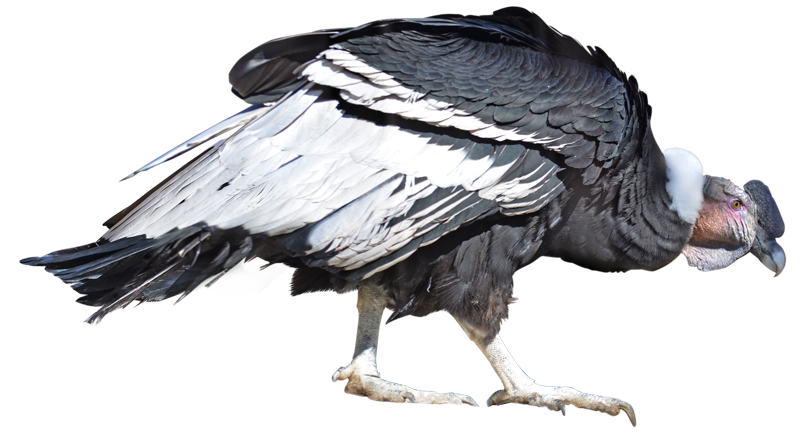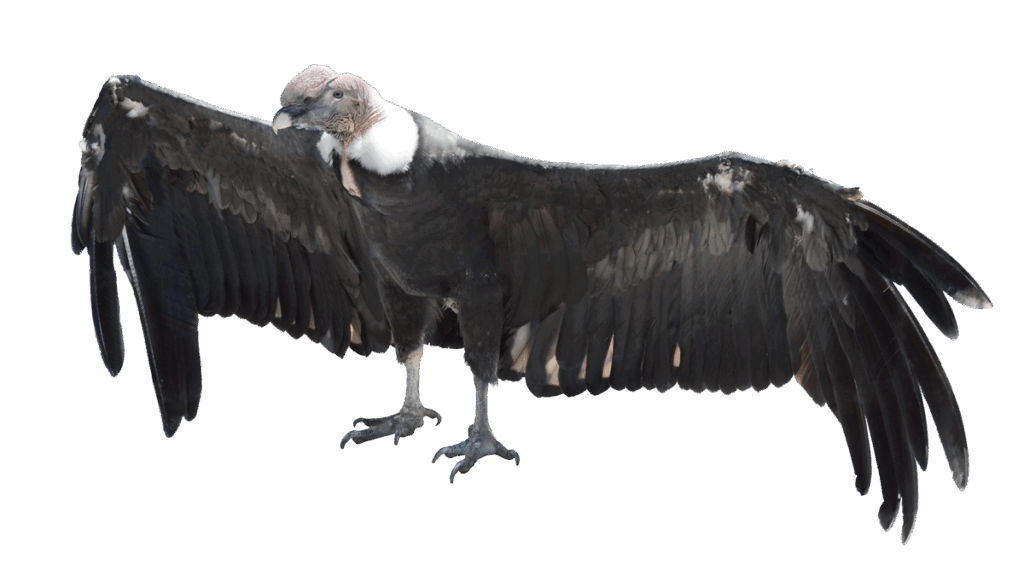
Vultur gryphus (Linnaeus, 1758)
ハゲタカ、ハゲワシ、コンドルの違い
The difference between gyps, bald hawks, and condors
全長1.2m、翼開長3.2m、体重7.7 – 15kg。南アメリカ西部のアンデス山脈と隣接する太平洋沿岸で見られます。メスよりも、オスの方が大型になります。またオスの頭部にはトサカ状の突起が発達します。北アメリカにもコンドルの仲間は生息しますが、アンデス山脈に生息する種「アンデスコンドル」を一般名として「コンドル」と呼ぶことが多いです。
首の付け根は襟巻状に、特徴的な白い羽毛が生えています。逆に頭と首にはほとんど毛が生えていません。これは大型動物の死体に頭を突っ込んで餌を取る際に、汚れが付きにくくなり、食事の度に毛づくろいの必要がなくなり衛生が保たれるのが理由です。また首と顔の部分は感情の起伏に応じて血流が変化し、赤くなります。特にオスは求愛の時に首を紅潮させ、メスにアピールします。
ところで、よく混同されるハゲタカ、ハゲワシ、コンドルの違いはどこにあるのでしょうか。まずハゲタカと名前のつく鳥は存在せず、ハゲワシ、コンドルの総称です。ハゲワシは旧世界(アジア、ヨーロッパ、アフリカ)に生息するタカ科の猛禽類で、コンドルは新世界(南北アメリカ)に生息するコンドル科の猛禽類です。見た目も似ていますが、どちらも腐肉食であることが共通です。ちなみに英語で禿げたワシを意味する”bald eagles”はハクトウワシのことを指します。白い頭がハゲているように見えるからそのように呼ばれています。なんだかややこしいですね。
It has a total length of 1.2m, a wingspan of 3.2m, and a weight of 7.7-15kg. It is found in the Andes Mountains and adjacent Pacific coast of western South America. Males are larger than females, and males also have a developed crest-like protrusion on their head. While condors also live in North America, the Andean condor, a species found in the Andes Mountains, is commonly referred to as the “condor.”
A distinctive white scarf-like feather grows at the base of its neck. Its head and neck are almost hairless. This prevents dirt from getting on them when they dig their heads into the carcasses of large animals to feed, eliminating the need for grooming after each meal and improving hygiene. Blood flow to the neck and face changes with emotional changes, causing them to turn red. Males, in particular, flush their necks during courtship to attract females.
So, what are the differences between gyps, hagetaka (bald hawks), and condors, which are often confused? First of all, the bird called “vulture” in Japanese is a general term for vultures of prey, including gyps and condors. Gyps are birds of prey of the Accipitridae family that live in the Old World (Asia, Europe, and Africa), while condors are birds of prey of the Cathartidae family that live in the New World (North and South America). Although they look similar, they both eat carrion. By the way, the bald eagle, which means “a hairless eagle” in English, is not bald. It got its name because its head is white. It’s confusing, isn’t it?
参考文献
静岡市立日本平動物園 | 動物紹介 | コンドル 2024年8月18日閲覧
東武動物公園 | 動物図鑑 | アンデスコンドル 2024年8月18日閲覧
ITmedia NEWS | ハゲワシという鳥の存在意義 | 山形 豪 | (2011年10月21日) 2024年8月18日閲覧

